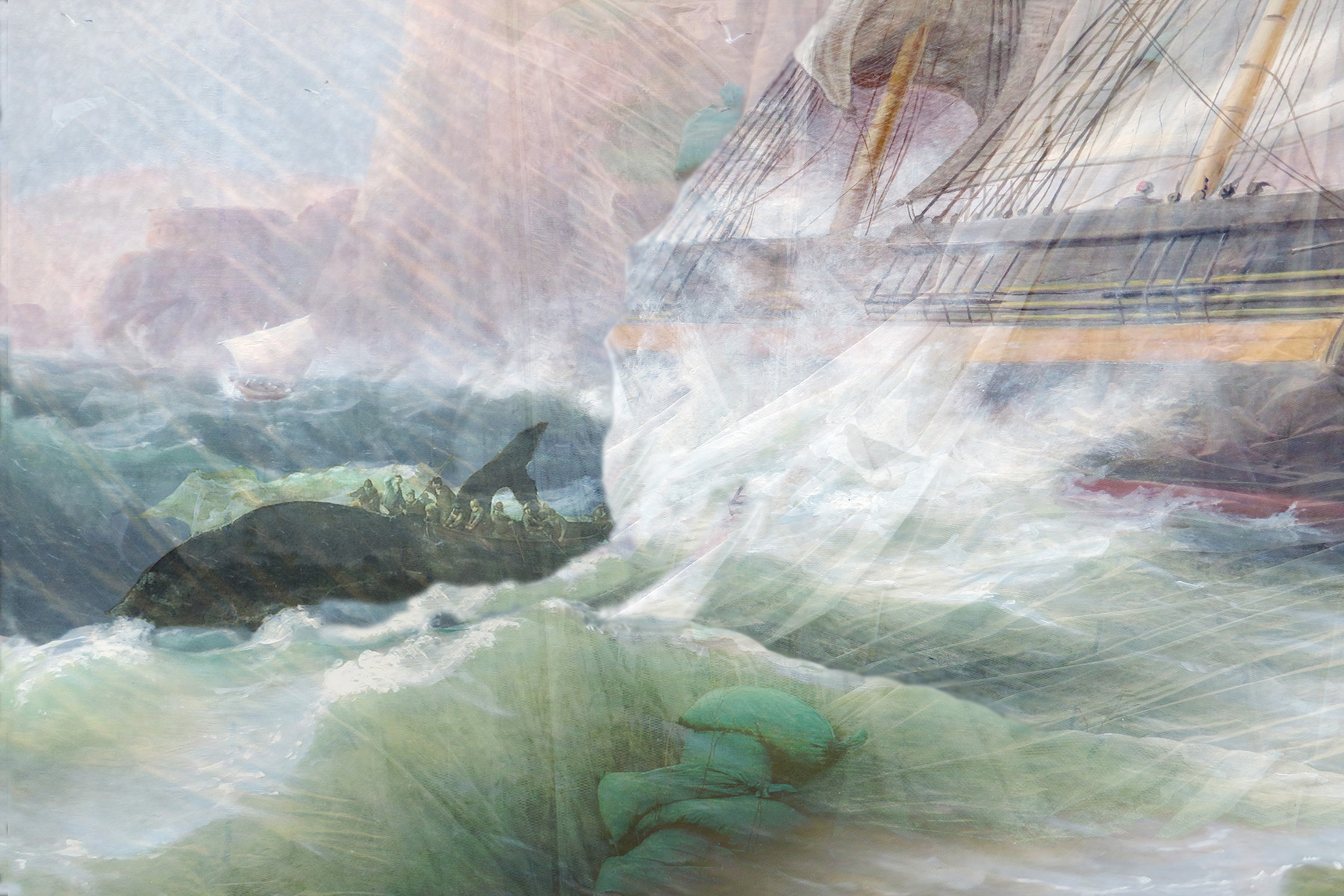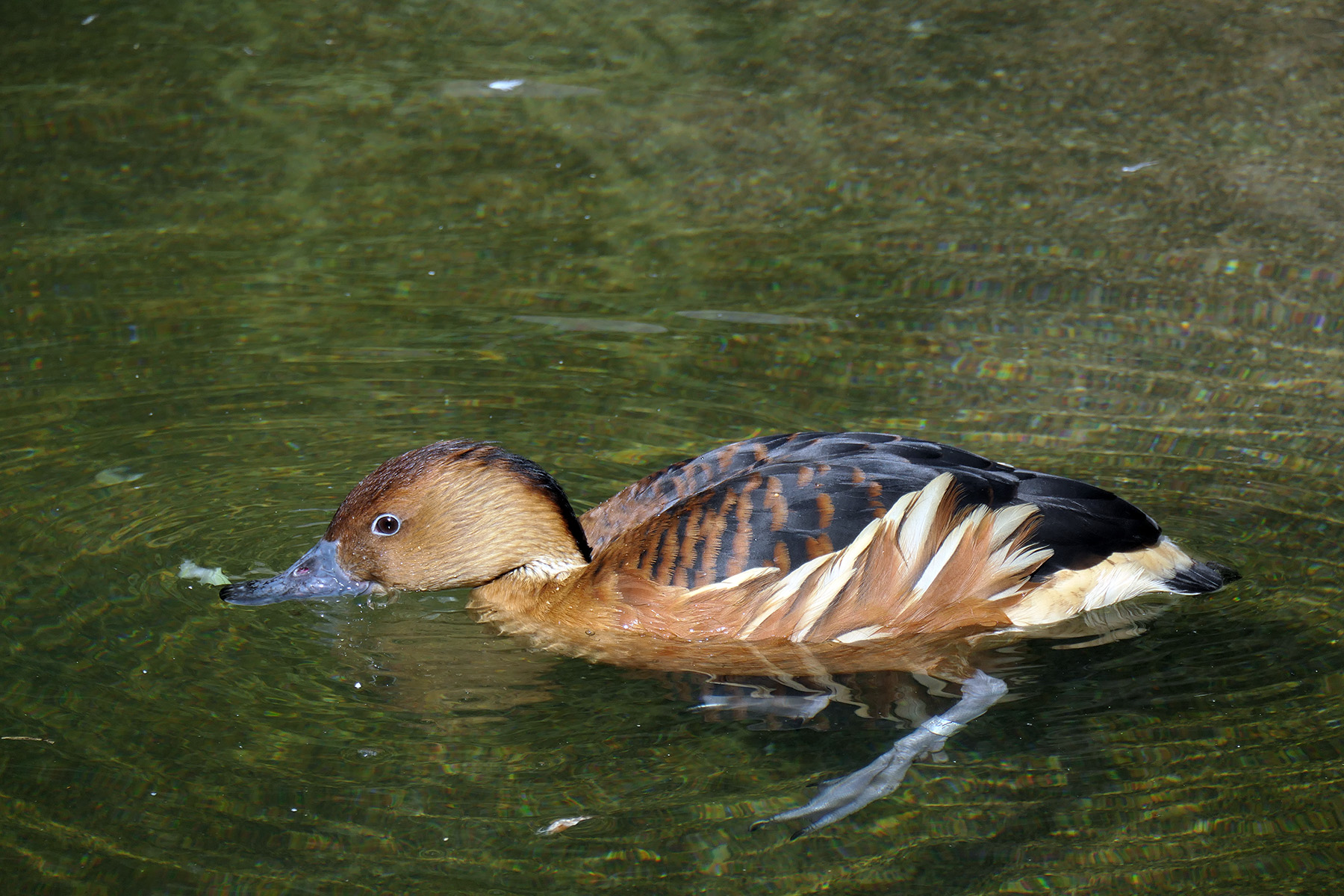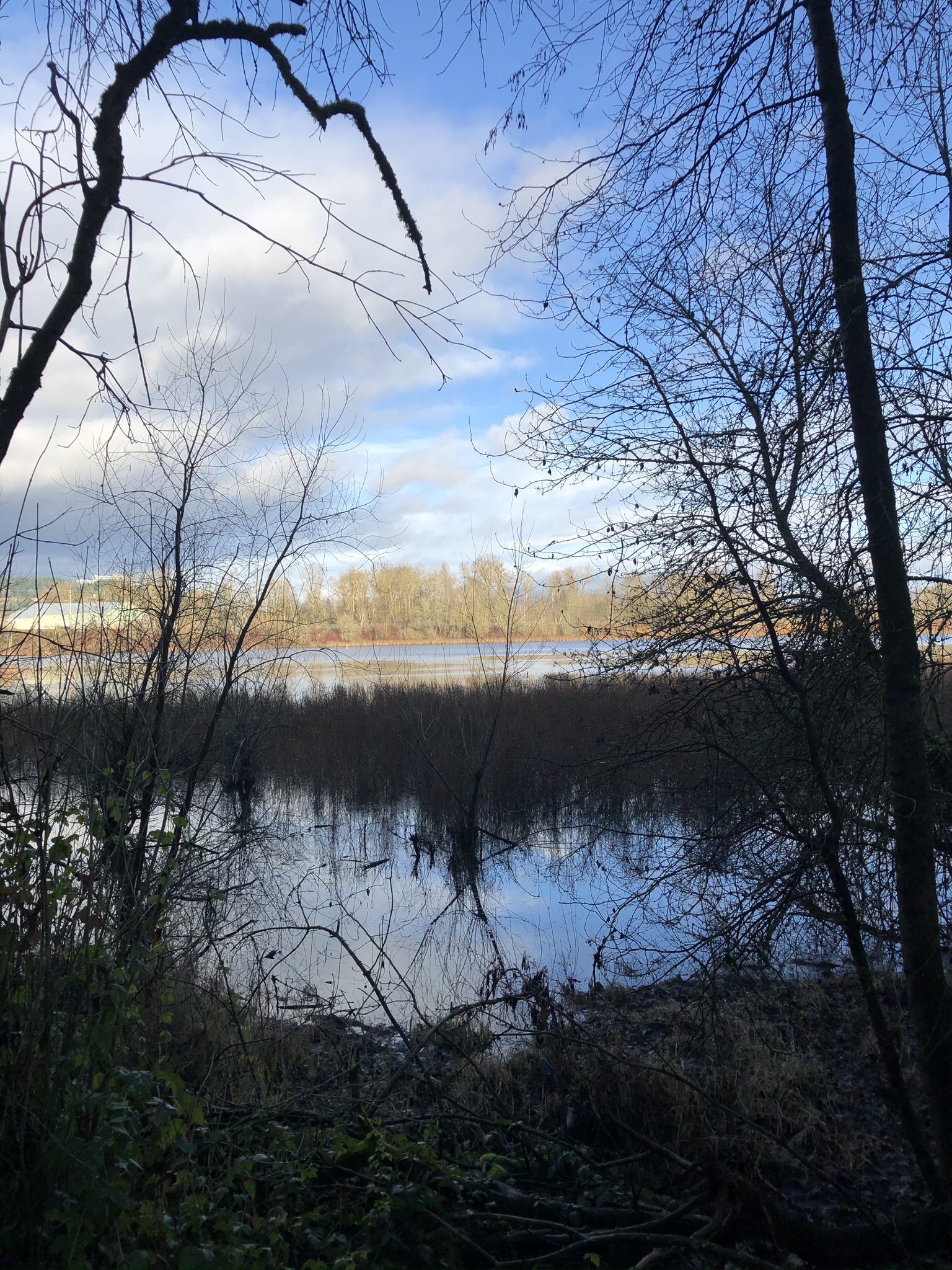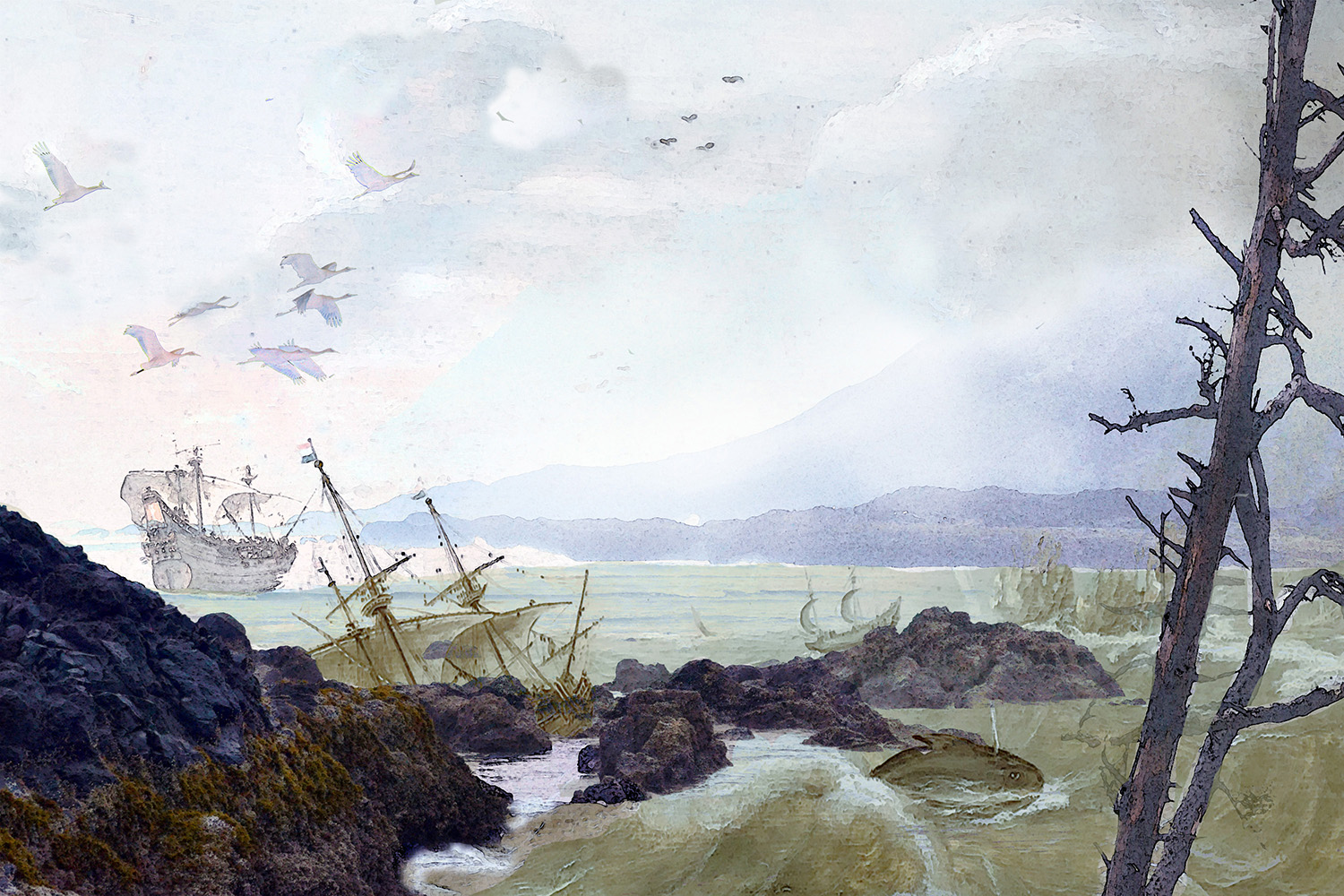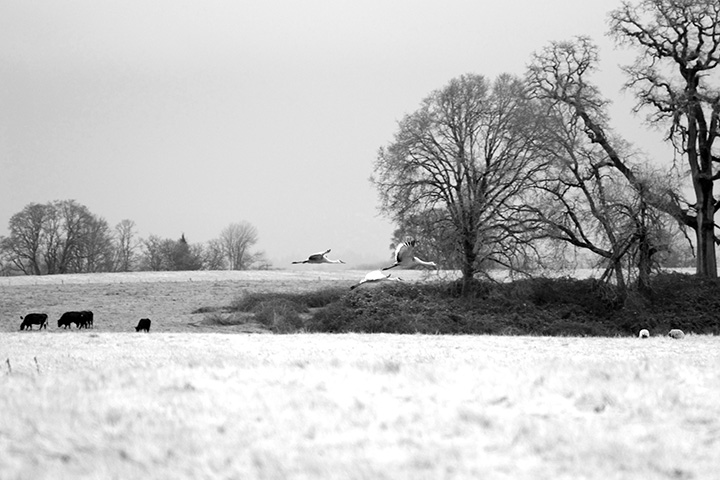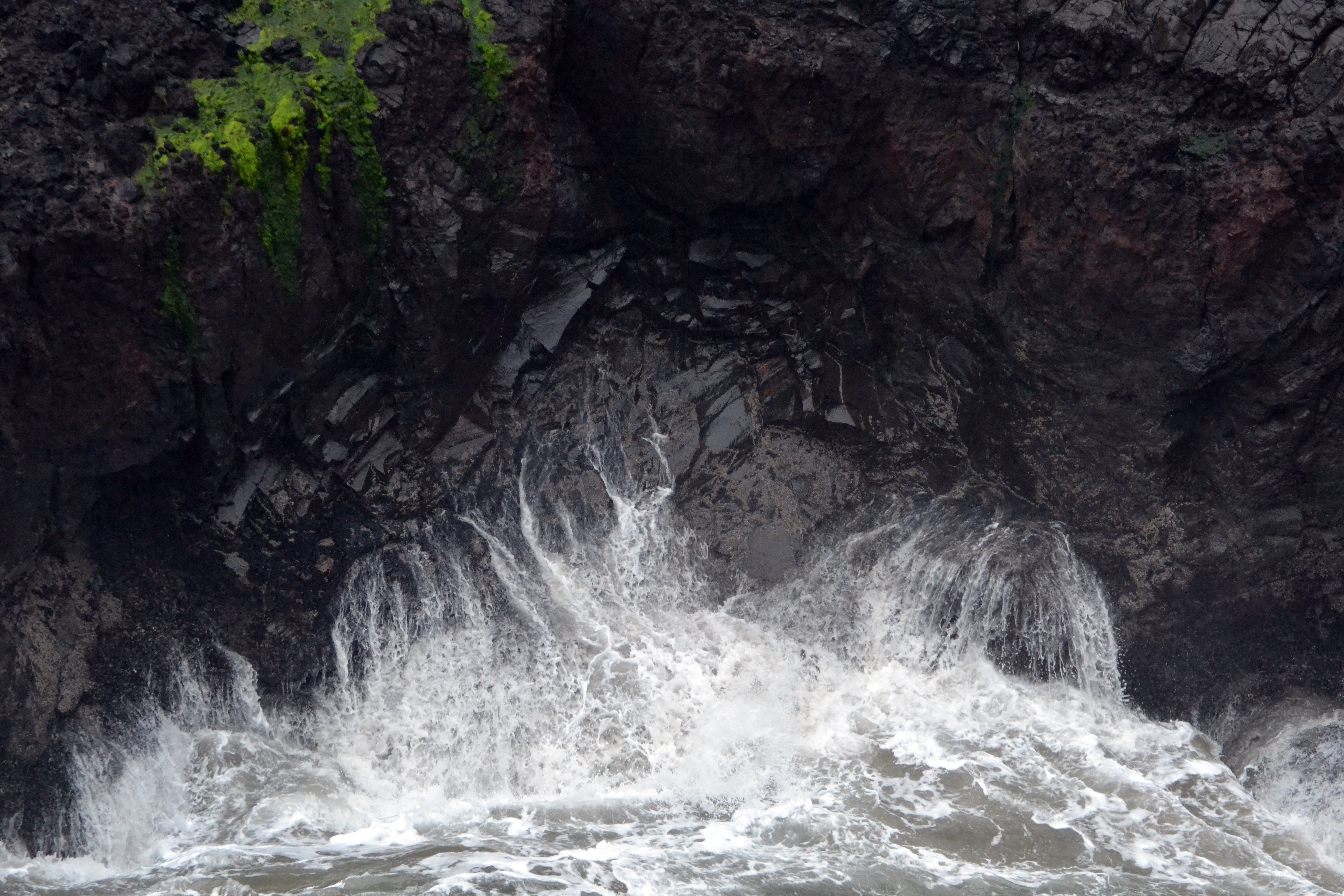Today’s title is not referring to the kind of activity intended to make you buy clothes. Instead I want to talk about representations trying to make you understand and/or buy into complex concepts. Think this is going to be boring? Think again! It provides a glimpse of science and will all relate to art. It will also be long. And personal. Consider it your reward, dear brave and zany readers, or punishment. Your pick.

My artist talk for my new montage series, now on exhibition at the Newport Visual Arts Center until April 25, was shut down because of sensible enforcement of social distancing in our coronavirus world. I figured I’ll write about the work instead (in more depth than a 10 minute presentation) and want to give credit to a brilliant short essay I read some years back that influenced my thinking. The author, philosopher James Nguyen, explained in ways even we lesser mortals can understand – he ain’t one of us, just check his education and employment history, we will hear more from this young man – how we can get a grip on complex, complicated issues by finding models that explain them in simpler ways. “All” it takes is a bit of creativity in coming up with the right model and play with it.

As an example he used the complex issue of figuring out how fake news spread in our societies and applied a model derived from epidemiology (a full three years, by the way, before we all tuned into that field in our desire to understand the spread of the coronavirus.) You can think of the dispersion of fake news as a virus that is infecting the population and apply to it medical models that track how diseases spread, for example the susceptible, infected, recovered (SIR) model, to reinterpret it. The people who buy into fake news are infected, the ones who now ignore it are immune (recovered) and then there are the masses who are susceptible to it. The SIR model predicts that we can modulate the spread by lowering the proportion of people who are susceptible, slowing down the rate or speed with which the news/virus is dispersed, and increase the rate at which those who started to believe the news/got sick now recover. The right proportion of these three factors (low, low, high) will lead to herd immunity, helping us to tackle an epidemic.
Nguyen points out that just as this scientific approach aims to represent a target, artists attempt to represent a subject. Reasoning about and constructing representations helps us to grasp new perspectives and to learn about the world. “In this sense art and science share a common core; the human ability to construct and interact with representations in order to learn about what it is that they represent.”

*
Fast forward to last summer when I visited the New Bedford Whaling Museum in Massachusetts for the first time. It is a terrific institution, providing tons of sensory experience (walk through the replica of a whale’s heart; board a whaling ship built to scale with every last detail), lots of education about the economics, politics and environmental issues historically associated with the whaling trade, and enticing exhibits of scrimshaw and macramé crafts, tools and weapons used during the expeditions. The museum offers replicas of the living quarters of those who benefitted from the the craze for oil derived from the blubber of whales, oil that burnt bright and without scent or smoke, and the craze for whale bones used in corsets confining women to their breathless, suffocating place. There is also plenty of information about the cruel fate of those doing the actual labor, and dying in the pursuit of profit for their masters. (I wrote about my first visit here.)
The visual art gallery in the museum exhibited some 20 or so paintings, titled The Wind is Op – Climate, Culture and Innovation in Dutch Maritime Paintings, by Dutch and Flemish Old Masters from their impressive collection. The maritime paintings and drawings from the 1500s to the 19th century differed in quality, from masterworks to “school of so and so… ” They shared, though, a clear expression of pride and admiration for the explorers, sailors and skill of the seafarers in their midst. The paintings celebrate the heroic and are in awe of maritime prowess and domination of the beasts.

They also provided testimony for the effects of climate change then: The ‘Little Ice Age’ between 1500 and 1600 greatly affected the character of Dutch whaling in the seventeenth century. The harsh cold that froze rivers and canals changed ocean currents, which impacted trade routes to Asia and America. It also stranded many a sperm whale on Dutch beaches, caught by shallow water, providing increased fascination with the giants for the population. The Dutch were particularly innovative in coping with these climate challenges. They built differently shaped ships adapted to arctic waters, learned to hunt from the shores and found ways to process the blubber either on ships or on shore for efficient transport in barrels sailing towards the Dutch ports.
It struck me then and there that for centuries people were not realizing what the unconstrained killing of whales would do to the species. They were aware that hunting grounds emptied out and they had to venture farther afield, but they possibly ascribed it to the experienced change in temperatures. The scientific knowledge of the possibility of extinction of a species due to overfishing (and the subsequent trickle-down effects) was not available.

WE, on the other hand, DO know what harms our oceans, and what needs to be done to protect those ecosystems. After all, when 2 million whales were killed in the 20thcentury in the Southern oceans alone, many countries came together to sign the International Convention for the Regulation of Whaling and establish a global body to manage whaling, the International Whaling Commission (IWC.) Its role has grown to tackle conservation issues including bycatch and entanglement, sustainable whale watching, ocean noise, pollution and debris, collisions between whales and ships as climate change impacts migration routes and global warming affects available food sources.

Yet several countries have recently left the organization to take up whaling again, with potentially dire consequences. On a larger scale, all of us, as consumers of plastics and other pollutants that end up in the waters, endanger existing whale populations. In our relentless addiction to the amenities provided by fossil fuel consumption, furthermore, we do little to mitigate climate change that affects maritime biological systems, with feedback loops into weather systems, with feedback loops, for that matter, into how disease spreads and creates pandemics.

Clearly we are not heeding the warnings coming from the experts, just like the people of Nineveh, in biblical times, did not open their arms to a – reluctant to begin with – prophet named Jonah, the very one supposed to have been swallowed by a whale. Postcards from Nineveh, then, is the title of my exhibit, riffing on what my work is trying to represent as a reminder of a complex problem – sometimes naive, sometimes willful ignorance affecting environmental protection.
*
So how do you represent the dangers of inaction? For one, you can point to a subject where practically everyone knows how horribly things can go and have gone wrong: people are aware of what has happened to whales. Limitless pursuit of fishing for profit brought several whale species to the brink of extinction across the centuries. Some are still fighting for their survival, like the North Atlantic right whale, others, like the grey whale, are now recovering due to organized intervention. This purpose was served by using excerpts from all the New Bedford whaling art that I photographed, mostly taking snippets with my iPhone. Here is a better example from the museum’s website.

Secondly, you have to represent what is at risk. For me nothing spells that out better than looking at the beauty of nature as we know it, with the implication how it can and will be lost if we don’t change course. The landscapes and seascapes from my photographs originate predominantly in the Pacific Northwest, along the Washington side of the Columbia river and the Oregon coast. There are also nature images from New Mexico, and Germany. Weaving the two elements together, what we know of the past (whaling disaster) and know as the present (the gift that is our landscape, still mostly intact) represents the intersection of human behavior, driven by either lack of knowledge or unwillingness to convert what we know into action.

Thirdly, who will be our prophet given the tendency to minimize scientific input either through absence of science education or willful dissing and curtailing of the discipline? Art has to step in and alert us to the issues, and perhaps help persuade us to engage. This aspect is represented by my photographs of art institutions and art, taken across the last decade, from the art museum in my hometown of Hamburg, Germany, Kunsthaus Wien, Museum Hundertwasser, the Barnes Foundation in Philadelphia, the Tacoma Glass Museum, the Philharmonic Concert hall in Los Angeles, the National Museum in Kraków, to the exhibition halls of the Rhode Island School of Design (RISDY) and Montreal’s Arsenal Gallery which resides in a converted shipyard and TOHU, the circus arts organization.






*
Good photographers introduce us to their vision of what is in front of our eyes. The way they represent something is by means of selecting a specific perspective, capturing a certain mood, structuring their composition – in the end, though, they depict. Photographs show a world that exists, however subjectively perceived.
Photomontages, on the other hand, convey something that is constructed, giving the artist the leeway to represent possibilities, anomalies, products of imagination, just like painters do. By combining, manipulating, and altering photographs they create something that cannot be found in reality and yet conveys a sense of alternate reality, of imagined recourse. The way they come about in my own case is not me sitting with a checklist of the aspects of the model discussed above in front of my computer program that helps me create these works. I am loosely guided by the original thoughts about representation, and use only things I photographed myself, but the rest unfolds organically and often in ways that surprise myself.
Take, for example, this image, Reminiscence, an invitation to look at the past.

The Dutch landscape, painted centuries ago, is one I saw every summer as a child. I lived in Holland for a year as a young child, and then for a decade at the German side of the border with Holland, and our summers were spent at the North Sea, with boats like the old ones depicted still occasionally appearing in the seascape of the 1950s. The figure is a self portrait of a Finnish photographer I greatly admire, Eliana Brotherus. I photographed her work in Vienna, 2 years ago. She herself linked to the past in her portrait series by appropriating the landscape, stance and coat of Caspar David Friedrich, a German painter of the romantic period, and she reminded me of pictures of myself when still young. I intended to make the figure transparent to represent how the past seeps through into the present, guiding us forwards or holding us back, who knows. When I looked at the image, though, all it reminded me of was how thin skinned I am – both porous for the onslaught of information that I seek every day, visually and otherwise, but also for absorbing the emotional currents around me, strained and otherwise, often forcing me to withdraw. It bubbled up into the montage, unintended.

Or, as a different example, several of the montages ended up representing some aspects of colonial invasion of this continent, not necessarily tied to whaling but to maritime prowess that led to the endangering or extinction related to our own species, the humans, ways of life and languages of First Nations.


One thing I was certain about, though, was that I did not want to lecture with a sledgehammer. I picked a rather small format for the montages, so they don’t overwhelm, but beckon for intimate interaction, inviting the viewer to come close to see the details. I wanted to give the Dutch and Flemish painters of yore a platform to celebrate their artistic achievements and importance to our understanding of history. And I wanted my own work to be beautiful to reach people’s minds, more so than disquieting, although I seem to be unable to avoid the latter completely regardless of what topic I tackle.

Now all we need is someone to review the work to see if it actually accomplishes what I set out to do: to remind us that we cannot simply interfere with nature without consequences, or keep up our behavior blind to what is required to protect what we love. Send me a postcard!
PS: True gratitude to my fellow photographers and friends Ken Hochfeld, who printed and framed and critiqued everything you see here, and Dale Schreiner who helped me to sequence the series – his habitual role in all of my exhibitions. A thank you also to Tom Webb who runs the VAC in Newport and invited me to show and hung it in the upstairs gallery. And a shoutout to Steve and Barbara Blair who photographed the work during a visit this weekend – I still have not seen it in real life in the gallery!

